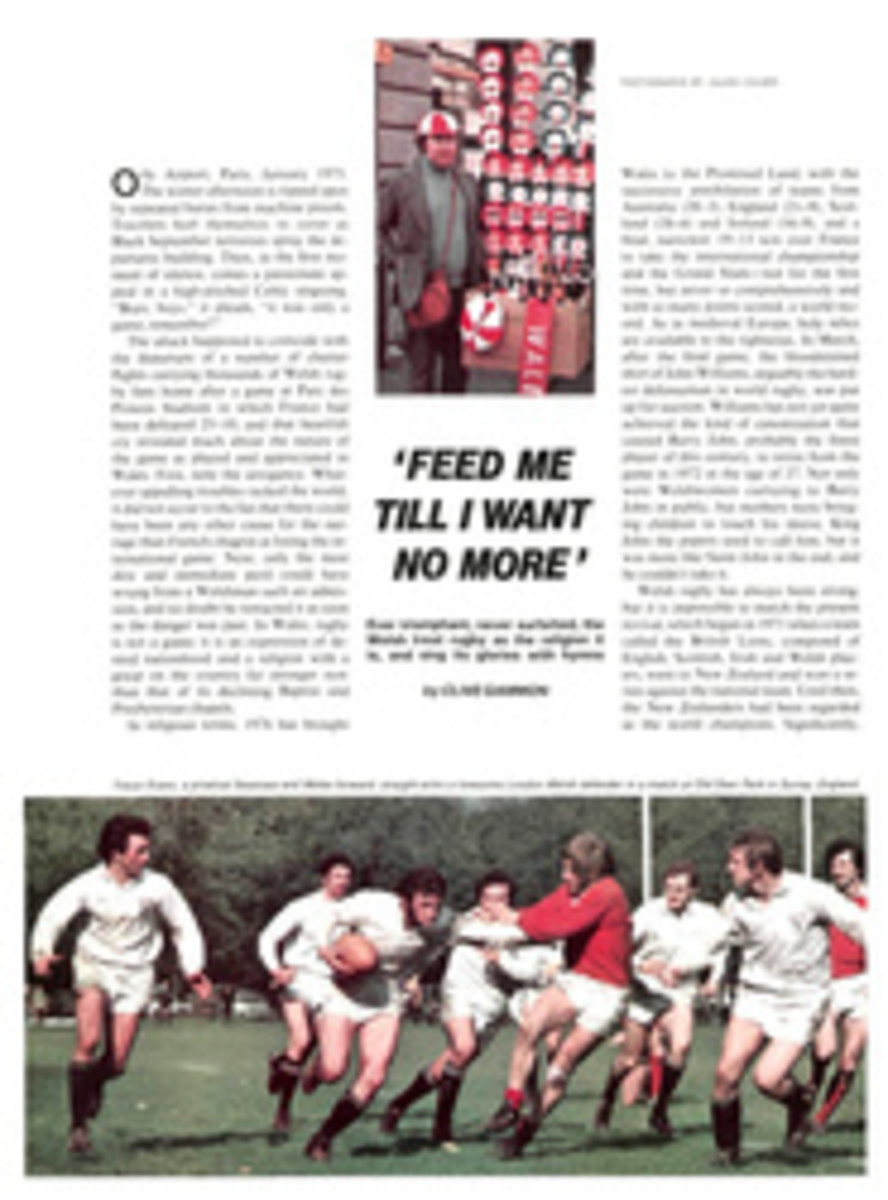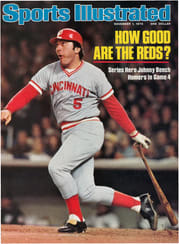
OUT OF AN ELEVATOR IN NEW YORK AND ONTO THE FIRST TEE AT PEBBLE BEACH
Pebble Beach and Firestone are but two of the golf courses that fill the dreams of duffers. But who can afford them? If you want to take a crack at Pebble, round-trip airfare from New York to the Coast runs $400. You have to hire a limousine to get down to the Monterey Peninsula in style. Then there are the hotels, meals, greens fees and the odd Nassau or two. I figure it comes to a minimum of $1,000. Probably more, counting the new irons, that nifty pink alpaca sweater and the matching alligator bag on sale at the pro shop.
But wait. A guy named Sam Anziano has promised me a deal. Don't worry about flight reservations, forget the new equipment, he tells me. Come to his place on 54th Street and bring a friend. He can arrange everything. The courses are in superb shape, he says, and getting a starting time is absolutely no problem at all Really.
My friend is skeptical. Who is this Sam guy, he asks. No doubt a shady travel agent who wants to sell us plane tickets to San Francisco by way of the Aleutian Islands. A subway token, I say. What else can you lose? You spring for the subway, he tells me.
One Saturday morning just before nine, we slip up to Sam's place. It's off Second Avenue, a nondescript red-brick building next to Jimmy Byrne's bar. The sign in the lobby' says we can find Sam on the fourth floor. We step into the elevator and the door shuts. Six seconds later it opens—on a dark green carpet of AstroTurf. We have arrived at Pebble Beach—sort of.
Sam, as it turns out, is on the level. He is the pro at the East 54th Street Golf Club, a computerized layout of four championship golf courses. For $10 an hour we can tee it up at Pebble or Thunderbird in Palm Springs or hack away at Firestone in Akron or Waialae Country Club on Oahu in Hawaii. Put up an additional $10 per half hour, Sam tells us, and he can straighten out our slices on the course of our choice.
The courses, if you can call them that, are the creation of Austrian-born engineer Richard Speiser, who hasn't had time to play the real game. He has spent the last 14 years tinkering with his contraption and he has run through six prototypes in the process. The PGA is so impressed with the latest model that it is endorsing it as an instructional aid. That's good news to Speiser, who is now realizing ambitious plans to market the machines through his company, Golf-O-Tron Inc. of New York. He says the machines (which cost $18,000 to $25,000) will soon be in operation in Chicago and Toronto, at Southern Illinois University and in other college phys ed departments.
Playing Speiser-style is a piece of cake. You stand on an elevated tee and fire away at a 10-by-10-foot nylon screen on which color slides of the course are projected. A computer behind the screen figures the distance and direction of the ball by measuring its velocity and tells you how much farther you have to go to reach the pin. The setup, says Speiser, is accurate to a yard.
What adds to the realism is the image of a ball that appears on the screen after the real ball is hit. The image recedes down the fairway, getting smaller and smaller until it comes to rest—say under a palm tree. Click, click goes the slide machine. Suddenly you're looking at the green from a position at the base of the tree—approximately.
Pebble Beach is our choice. We step on the tee, and Sam pushes a button on the console behind us. The first hole appears, a 385-yard par-four with a slight dogleg to the right. Watch out, Ben Crenshaw, I'm thinking in the middle of my backswing. Thonk. The ball veers crazily off into a net next to the screen. In the upper right-hand corner a message appears in red. O.B., it says. Out of Bounds. My friend snickers into his coffee cup.
I take a Mulligan, of course, and blast it—46 yards. Six flubs later the computer relents, telling me I have finally reached the green. The closeup slide of the green fades from the screen, and the lights over an AstroTurf putting surface automatically come on. I'm four yards from the pin, says the computer, so I spot my ball next to a card displaying that position and aim at the cup that is set into the floor. I'm down in two. "Nine," yells my friend, loud enough for the foursome on the 5th fairway at Oahu to hear.
We've made it to the 3rd when Sam graciously sends out to the local deli for refreshments. Sam's brother Jimmy, the greenskeeper, gives me a doughnut as I'm pondering my lie in a bunker. I card another nine and start thinking seriously of cold beer. "It's a little early for that, isn't it?" asks Jimmy. My expression tells him it is, in fact, a little late. Ten minutes later Jimmy catches us on the 6th fairway with a shopping bag full of beer. It is 11 a.m.
Things, as you can imagine, get worse. We get bumped off Pebble by a couple of guys from the Bronx wearing rubber boots, and Sam switches us to the back nine at Thunderbird. Through six holes I'm shooting 40, and my friend is up by four strokes. Sam recommends lessons, my friend recommends tennis. I've got something better in mind. Home to some boilermakers and the telephone. Got to give Bing Crosby a telephone call. It was, I'll tell him, the next best thing to being there myself.

